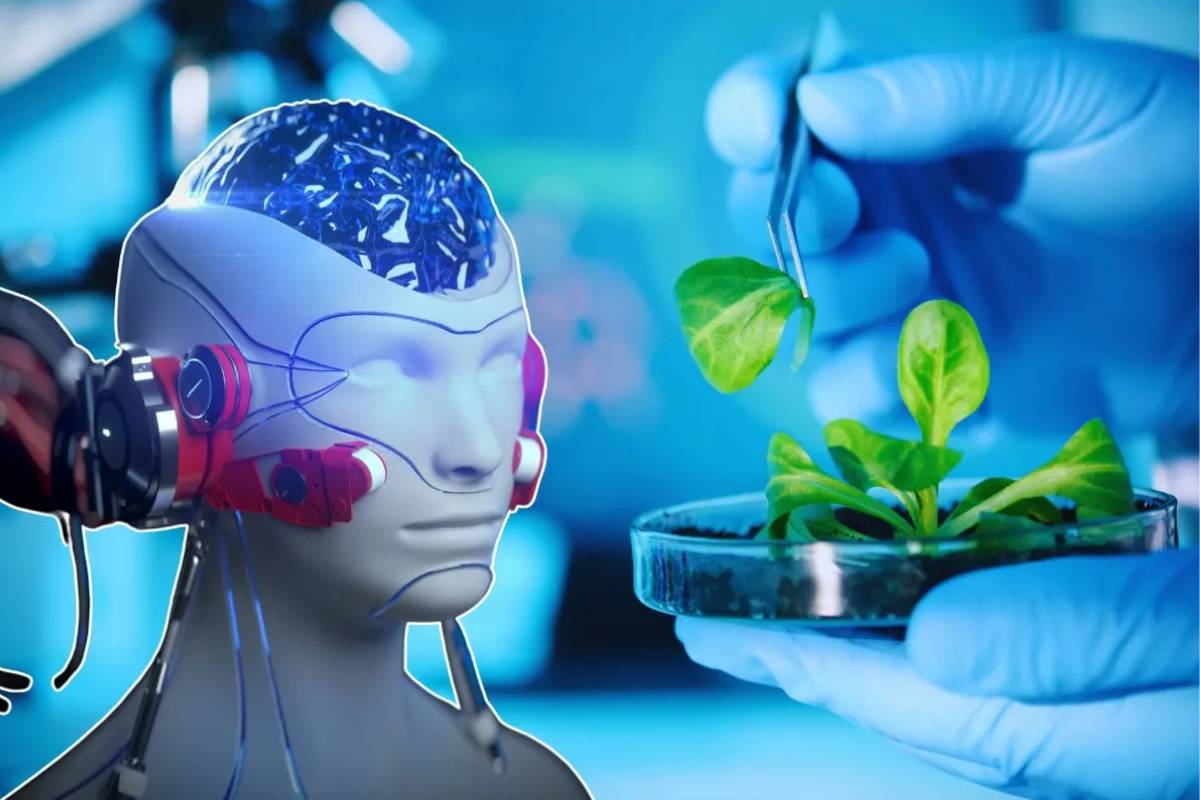In recent decades, biotechnology has emerged as one of the most innovative and transformative fields in science. By harnessing the power of living organisms to develop solutions—ranging from breakthrough medical treatments to sustainable methods of producing food and energy—this technology has the potential to revolutionize numerous industries.
While Artificial Intelligence (AI) often takes the spotlight, biotechnology is an equally powerful force, capable of reshaping entire sectors and offering groundbreaking solutions to some of the world’s biggest challenges, such as public health (including digital health), climate change, and food security.
Biotechnology: The Next Technological Revolution That Could Surpass AI

In recent years, Artificial Intelligence has dominated headlines and investment in the tech world. Its direct impact on various sectors is evident, with projections showing the market growing at a rate of 36.6%, from $93.27 billion in 2020 to $826.73 billion by 2030.
But what if AI isn’t the only game-changing technology on the horizon? The biotechnology sector, growing at a rate of 12% to 15% annually, may ultimately lead the next major technological revolution.
In the Market Makers podcast, Cristiano Souza, former Dynamo executive and now CEO of Zeno Equity Partners, highlighted that the transformative power of biotechnology is often underestimated. Its ability to influence areas like health, agriculture, and clean energy suggests that in the coming decades, biotechnology could bring even more profound innovations than we can currently imagine, potentially surpassing AI and reshaping how we live and interact with the world.
According to Skyquest, the biotechnology sector is expected to grow at a rate of 13.9% per year, from $1 trillion in 2022 to $3.90 trillion by 2031.
These advances are not just incremental; they represent innovations that can disrupt entire industries, creating new opportunities and challenges on a global scale. From the development of new medical treatments to the creation of sustainable biofuels, biotechnology is at the forefront of change.
What Is Biotechnology and What Are Its Applications?
Biotechnology uses biological systems, such as living organisms or cells, to develop new products and innovative processes. It combines various disciplines—including genetics, biochemistry, bioengineering, and molecular biology—and is applied in fields such as medicine, agriculture, and industry.
A classic example is using yeast in fermentation to produce food and beverages. However, biotechnology goes far beyond this: recent advancements in genetic engineering have enabled precise manipulation of DNA.
This opens the door to innovations that once seemed like science fiction, such as:
- Advanced and personalized gene therapies tailored to treat diseases based on an individual’s unique genetic profile
- Genetically modified crops that are pest-resistant and nutritionally enhanced
- Laboratory-grown human tissues, which can be used for pharmaceutical testing or transplants
Why Is Biotechnology Considered the Next Technological Revolution?
The revolutionary potential of biotechnology lies in its ability to address some of the most pressing challenges of modern society. One of its most promising developments is the creation of innovative treatments, such as immunotherapy, which leverages a patient’s immune system to fight diseases like cancer.
In industry, biotechnology is revolutionizing material production, such as developing bioplastics that are biodegradable and help reduce the environmental impact of traditional petroleum-based polymers.
Additionally, techniques like 3D bioprinting are enabling the production of human organs and tissues, offering new hope for transplants and medical treatments.
The sector also plays a crucial role in the search for sustainable environmental solutions, a growing global priority. For example, bioremediation—the use of microorganisms to clean up soils and water polluted by industrial waste—is one such solution.
What sets biotechnology apart from other disruptive technologies, and drives its projected growth of up to 15% annually, is its almost symbiotic relationship with Artificial Intelligence.
While many industries view AI as competition, biotechnology is enhanced by it. AI can process vast amounts of biological data, accelerating the development of new therapies and products. As AI advances, so too does biotechnology.
Four Key Companies Dominate This Sector
At the core of the biotechnology supply chain, four major companies dominate the production of essential materials and equipment: Thermo Fisher, Danaher, Sartorius, and Merck KGaA.
- Thermo Fisher Scientific: Headquartered in the U.S., Thermo Fisher is one of the world’s largest suppliers of scientific and biotechnological research products and services, offering everything from analytical instruments to specialized clinical diagnostic services. Formed by the 2006 merger of Thermo Electron and Fisher Scientific, the company has rapidly expanded through strategic acquisitions, such as Life Technologies and PPD. In 2023, it achieved a market capitalization of $202 billion, with an annual revenue of $44.92 billion, ranking it among the top 100 companies in the Fortune 500.
- Danaher Corporation: Based in Washington, D.C., Danaher is a global conglomerate that designs and manufactures products for the medical, industrial, and commercial sectors. With assets totaling $78.5 billion in 2024, Danaher has a significant presence in biotechnology, thanks to acquisitions such as Pall Corporation and Cytiva. Its focus on solutions for biotherapeutic and vaccine production has solidified its position, especially after acquiring parts of General Electric Life Sciences.
- Sartorius AG: Based in Germany, Sartorius is a leading provider of equipment and services for the biopharmaceutical industry, specializing in biotechnological drug and vaccine production. Since its merger with Stedim Biotech, Sartorius has expanded its global footprint and is listed on Germany’s DAX index, representing the country’s largest companies.
- Merck KGaA: Founded in 1668 in Germany, Merck is the world’s oldest chemical and pharmaceutical company. Operating in 66 countries with around 60,000 employees, Merck is a powerhouse in life sciences, particularly through its subsidiary MilliporeSigma, which supplies essential materials for biotechnological drug development.
These companies not only dominate the global supply chain but also hold a competitive edge due to the “switching cost,” where the high cost of finding alternative suppliers keeps biotechnological drug manufacturers dependent on their services.
- Nextage is also gaining international recognition for its contributions to the technology and innovation sectors! Click here to learn more…
Advantages and Risks of Investing in the Biotechnology Sector
The primary advantage of investing in biotechnology is the immense growth potential, driven by increasing demand for biotechnological products, especially in health, sustainable and precision agriculture, and clean energy. Continuous innovation in advanced therapies, vaccines, and solutions to global issues like climate change—boosted by AI—creates highly promising opportunities.
However, the sector also carries a high degree of uncertainty, as not all companies engaged in research and development can successfully translate scientific advances into commercially viable and profitable products.
The complexity and long development cycles of new biological drugs and therapies, combined with stringent regulatory approval processes, make biotechnology investments risky. Even small failures in clinical trials or regulatory setbacks can lead to significant losses.
One way to mitigate these risks is by investing in companies that dominate the biotechnology supply chain, such as the ones mentioned earlier, and ensuring solid strategic planning. These companies hold a strong position by providing essential equipment and materials to the pharmaceutical and medical technology industries, often securing long-term contracts with major clients.






